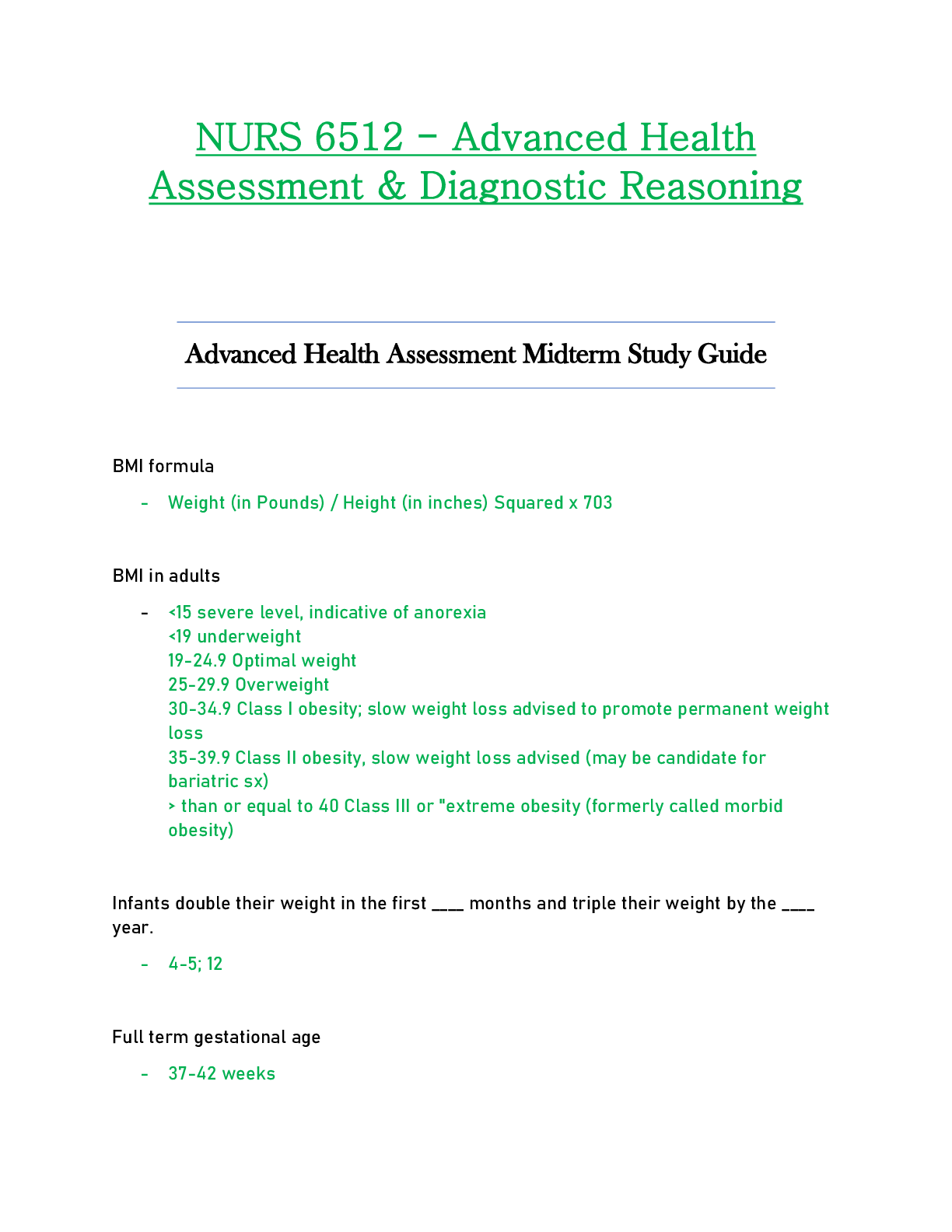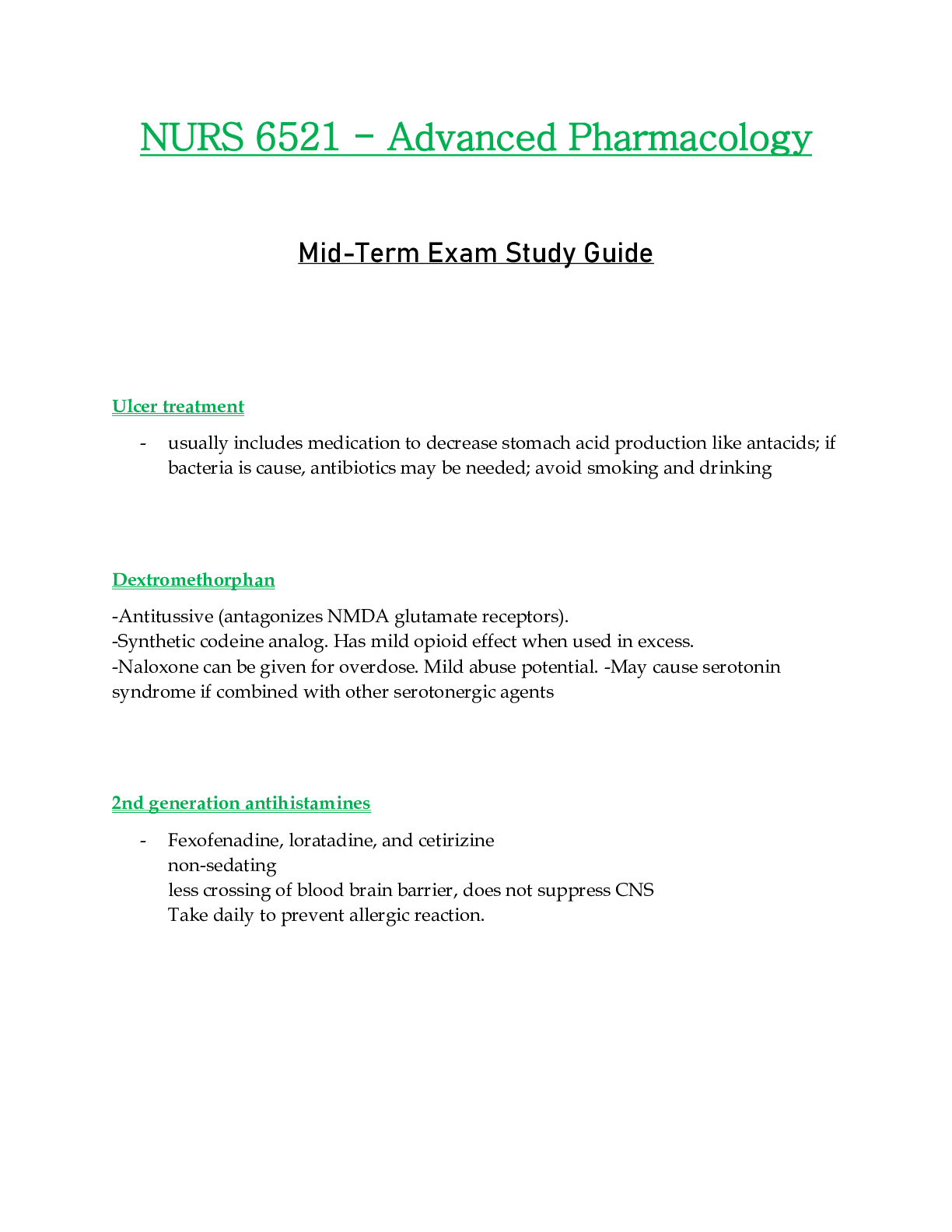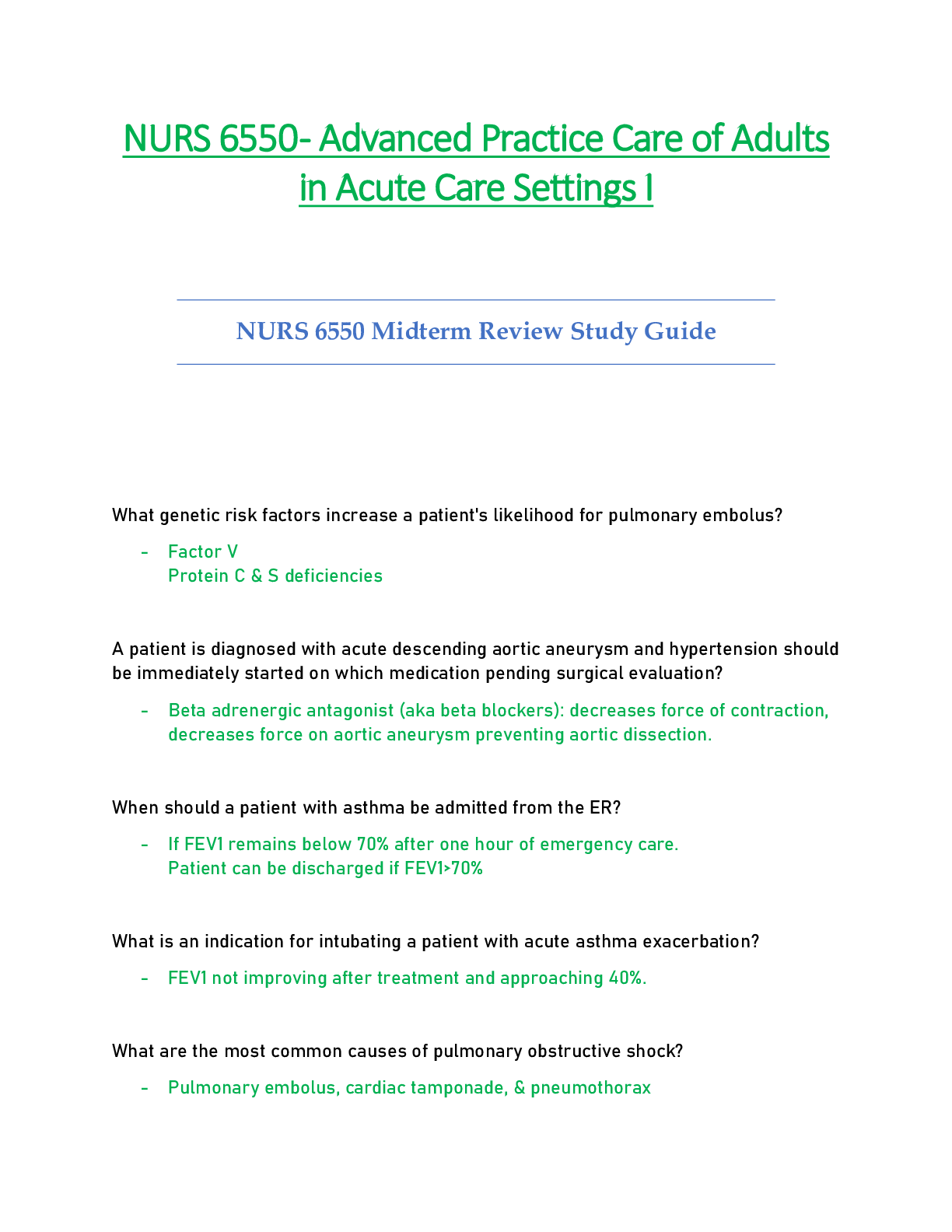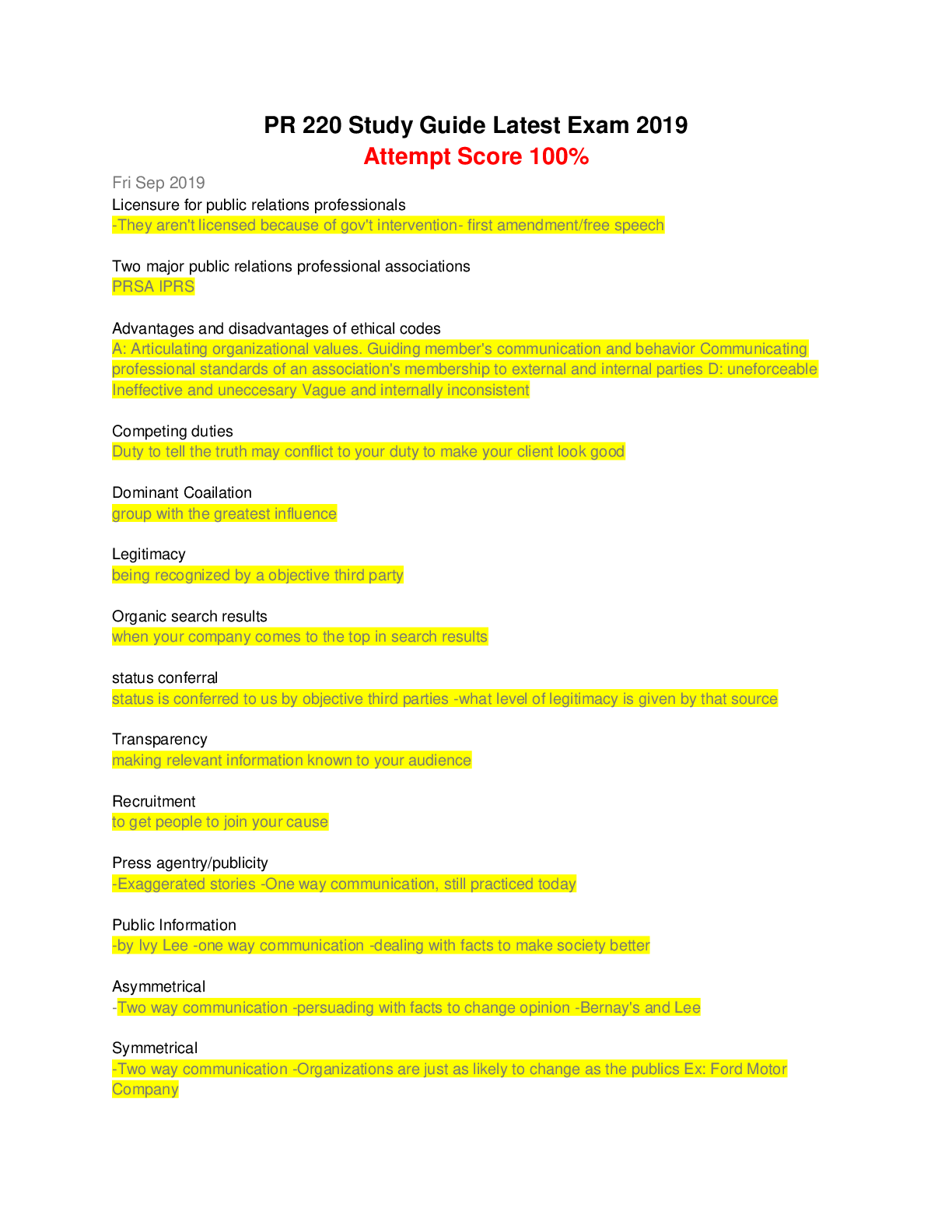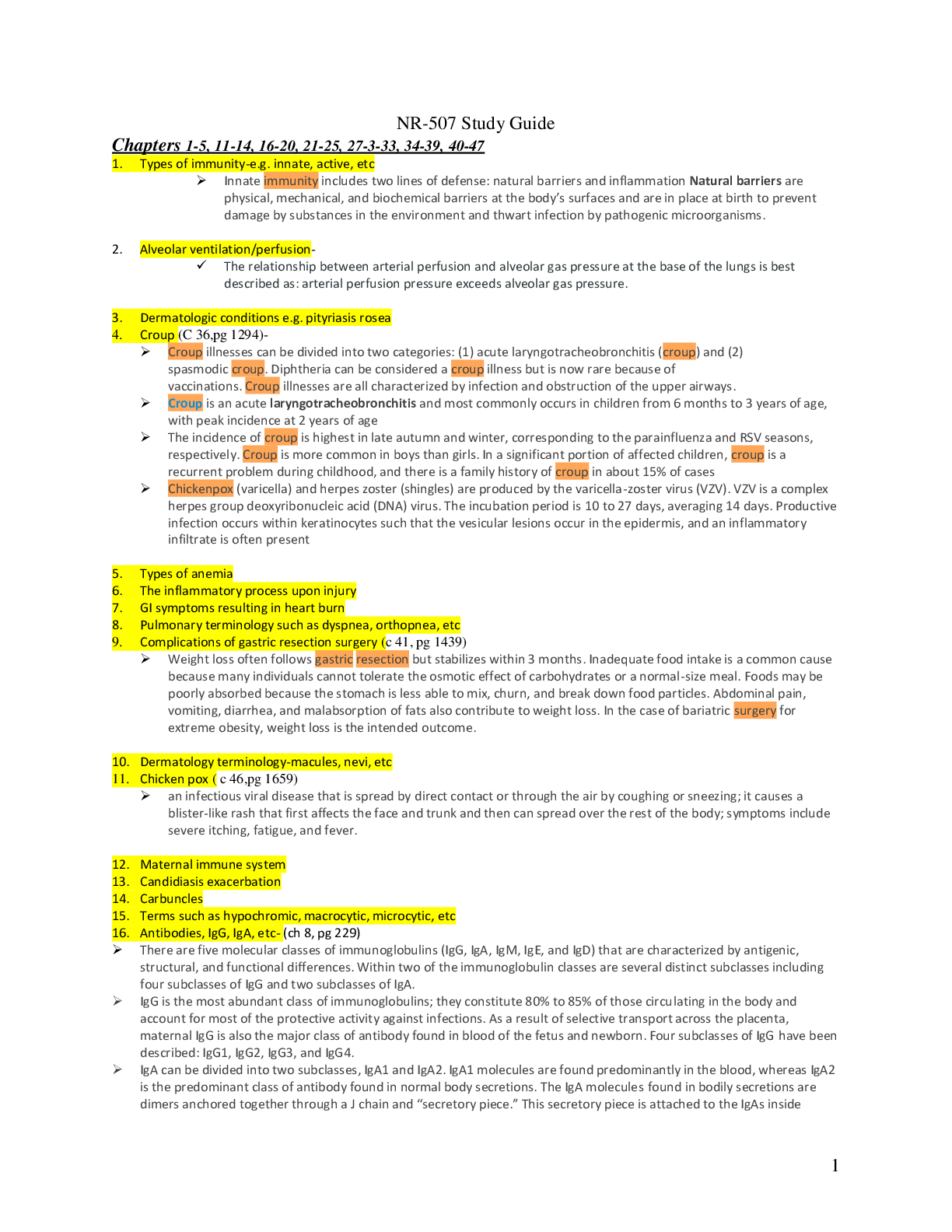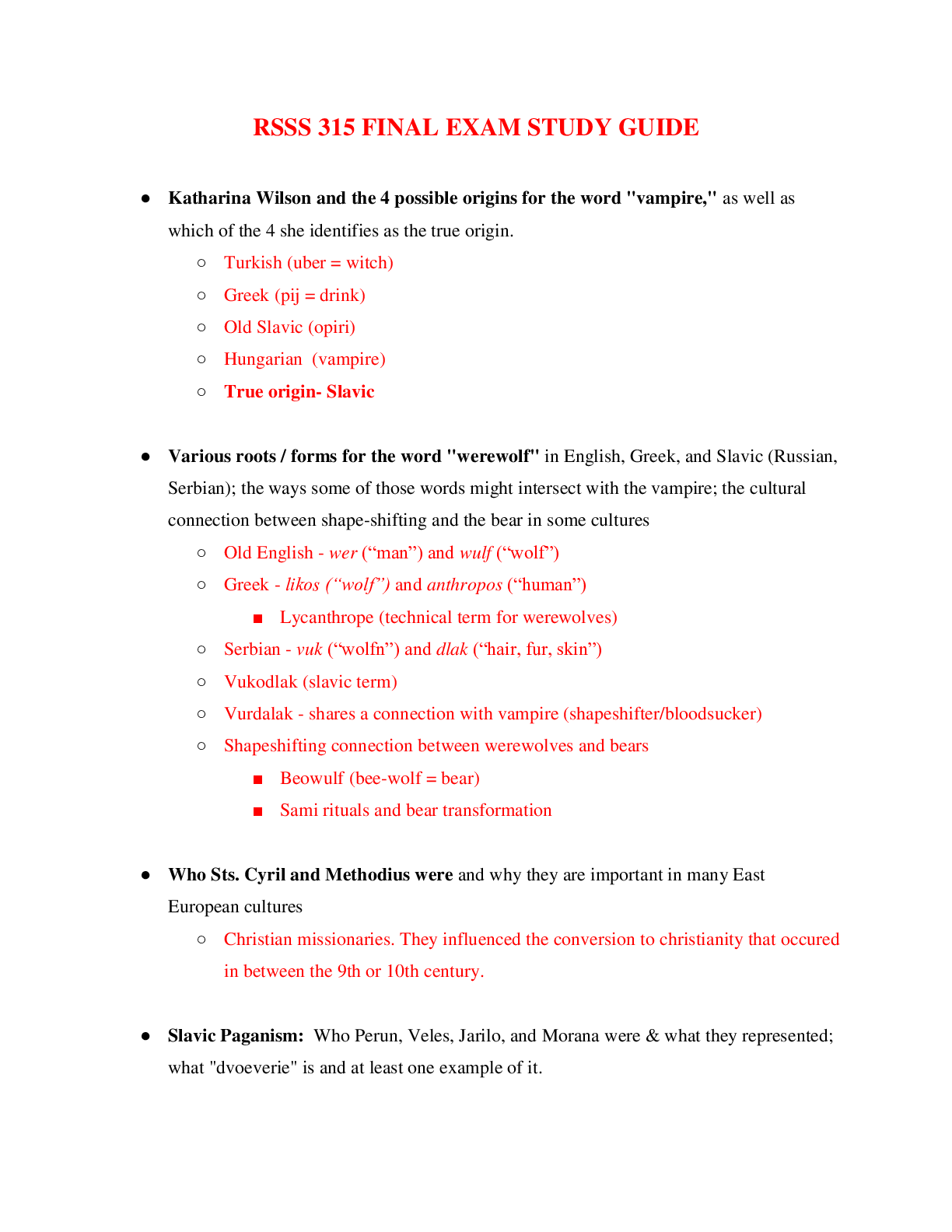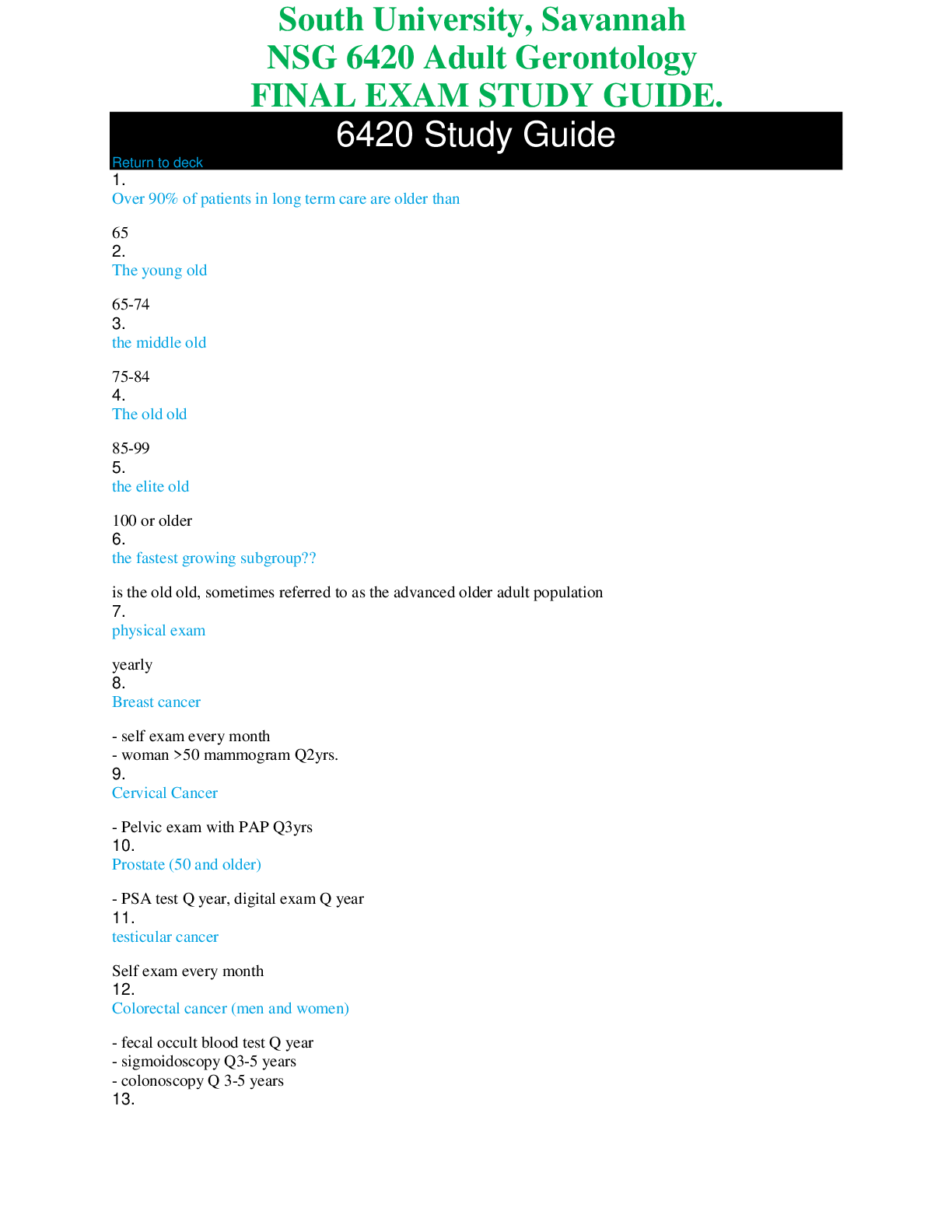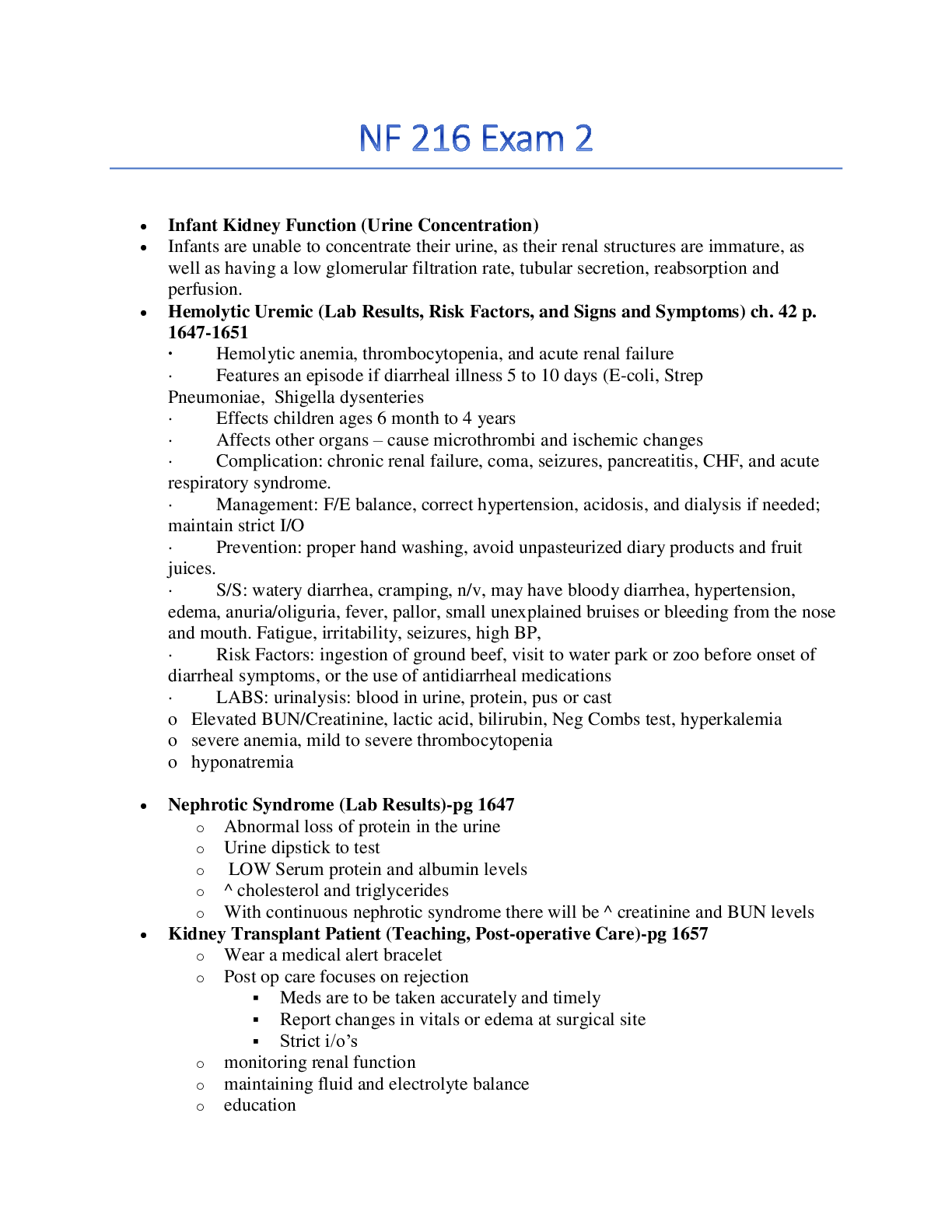*NURSING > STUDY GUIDE > NR503 / NR 503 Final Exam Study Guide Updated: Population Health, Epidemiology & Statistical Princip (All)
NR503 / NR 503 Final Exam Study Guide Updated: Population Health, Epidemiology & Statistical Principles - Chamberlain
Document Content and Description Below
NR503 FINAL EXAM STUDY GUIDE NR-503 Population Health, Epidemiology & Statistical Principles NR503 FINAL EXAM STUDY GUIDE Review primary, secondary, & tertiary prevention practices, scr... eening, vulnerable populations, and the role of the nurse practitioner. Week 5 (Ch. 2) 1. Discriminate populations at risk for development of chronic health conditions while associating the role of the Advanced Practice Nurse in levels of promotion. Common risk factors: unhealthy diet, physical inactivity, and tobacco use Childhood risk: There is now extensive evidence from many countries that conditions before birth and in early childhood influence health in adult life. For example, low birth weight is now known to be associated with increased rates of high blood pressure, heart disease, stroke and diabetes. Risk accumulation: Ageing is an important marker of the accumulation of modifiable risks for chronic disease: the impact of risk factors increases over the life course. Underlying determinants: The underlying determinants of chronic diseases are a reflection of the major forces driving social, economic and cultural change – globalization, urbanization, population ageing, and the general policy environment. Poverty: Chronic diseases and poverty are interconnected in a vicious circle. At the same time, poverty and worsening of already existing poverty are caused by chronic diseases. The poor are more vulnerable for several reasons, including greater exposure to risks and decreased access to health services. Psychosocial stress also plays a role. Preventative health actions are often categorized in three levels: • Primary prevention - aims to prevent disease or injury before it ever occurs. ▪ This is done by preventing exposures to hazards that cause disease or injury, altering unhealthy or unsafe behaviors that can lead to disease or injury, and increasing resistance to disease or injury should exposure occur. ▪ Nurses play the part of educators that offer information and counseling to communities and populations that encourage positive health behaviors ▪ Examples include: • legislation and enforcement to ban or control the use of hazardous products (e.g. asbestos) or to mandate safe and healthy practices (e.g. use of seatbelts and bike helmets) • education about healthy and safe habits (e.g. eating well, exercising regularly, not smoking) • immunization against infectious diseases. [Show More]
Last updated: 3 years ago
Preview 1 out of 34 pages
Instant download
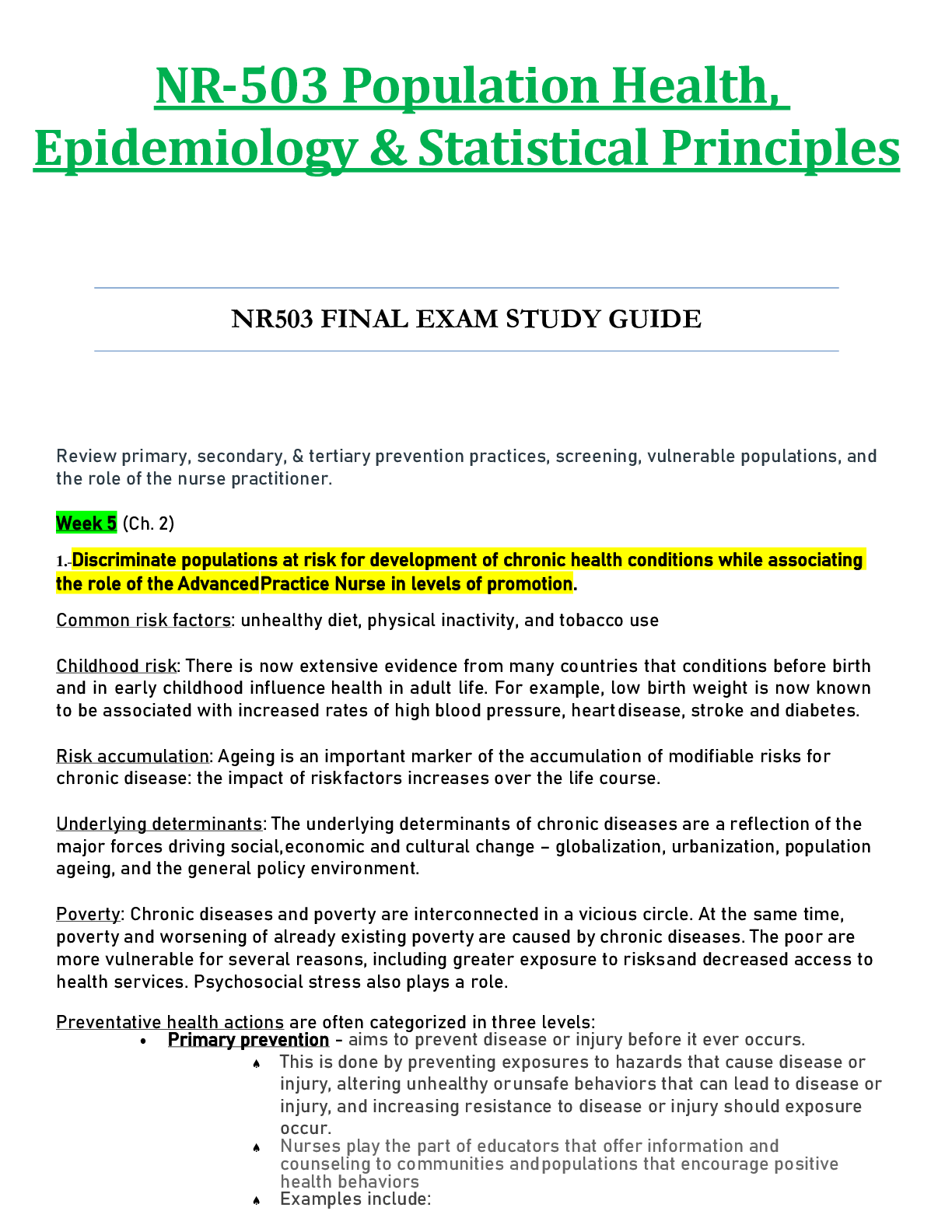
Buy this document to get the full access instantly
Instant Download Access after purchase
Add to cartInstant download
Reviews( 0 )
Document information
Connected school, study & course
About the document
Uploaded On
Jun 05, 2021
Number of pages
34
Written in
Additional information
This document has been written for:
Uploaded
Jun 05, 2021
Downloads
0
Views
55

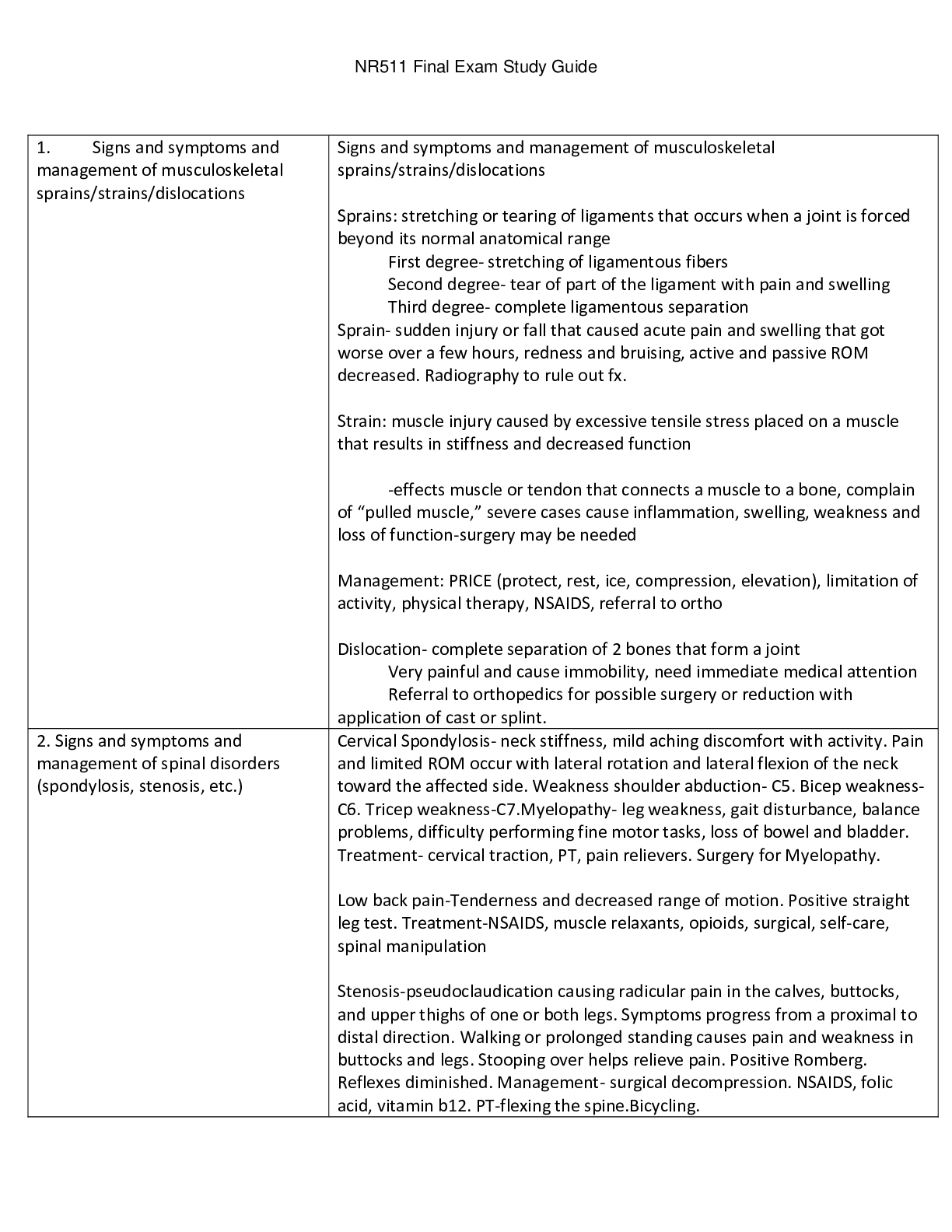
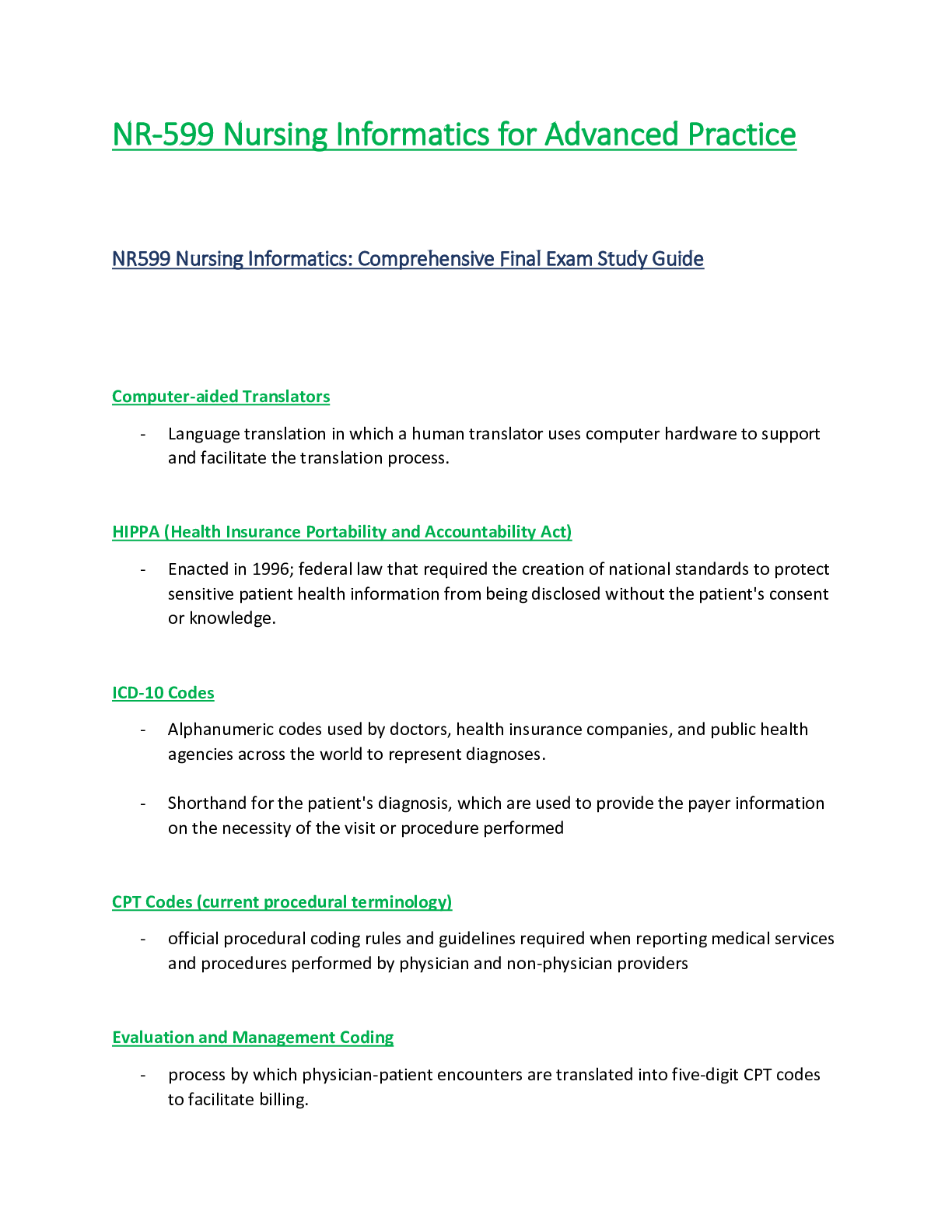
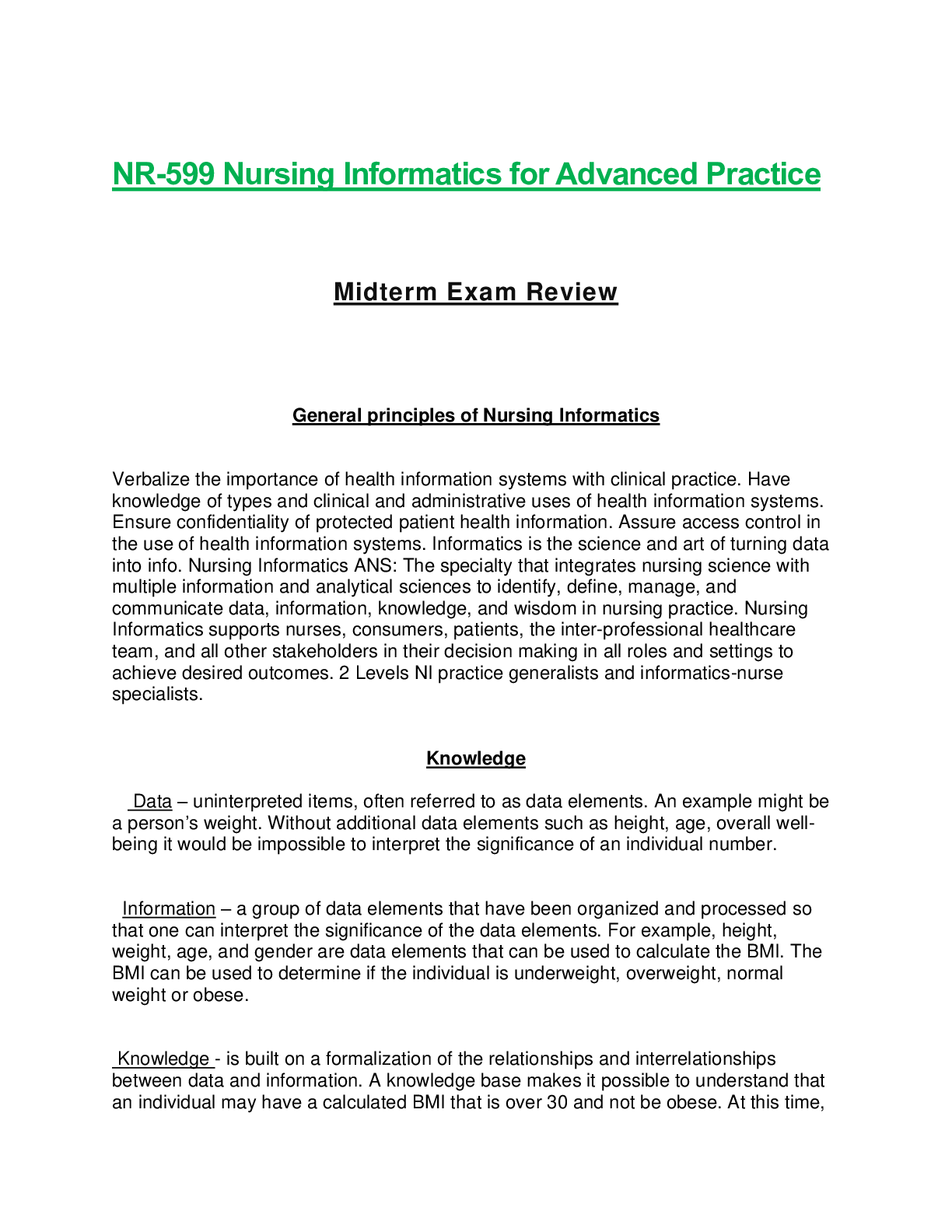



.png)

